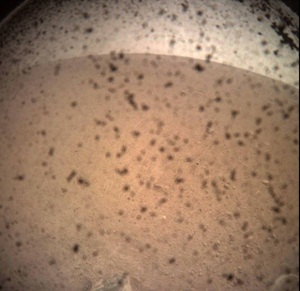A Chinese space probe successfully touched down on the hitherto uncharted far side of the Moon, on Thursday, in a historic first landing there on a mission seen as an important step for China's space programme.

Chinese state television said China National Space Administration’s robotic probe mission Chang'e 4 landed on the 186-kilometre-wide Von Kármán Crater on Wednesday night (3 January), starting the first-ever robotic probe on the mysterious far side of the lunar surface.
The mission touched down on the lunar surface at 9:26 pm EST (0226 GMT and 10:26 am Beijing time on 3 January), according to Chinese space officials. Chang'e 4 will perform a variety of science work over the coming months to better understand the structure, formation and evolution of Earth's natural satellite.
"Congratulations to China's Chang'e 4 team for what appears to be a successful landing on the far side of the moon. This is a first for humanity and an impressive accomplishment!" NASA Administrator Jim Bridenstine said via Twitter on Wednesday night, after word of the milestone began circulating on social media.
Congratulations to China’s Chang’e-4 team for what appears to be a successful landing on the far side of the Moon. This is a first for humanity and an impressive accomplishment!
It takes the moon about the same amount of time to spin once on its axis as it does for the natural satellite to orbit the Earth: 27.3 days. Because of this "tidal locking," we only ever see one face of the moon, which we call the near side.
All of the earlier robotic and human missions, including all six of NASA's crewed Apollo missions to the lunar surface, touched down on the near side. The far side of the Moon is a much tougher target for surface exploration because of its rocky bulk that could block direct communication.
China launched a relay satellite called Queqiao in May 2018 to deal with the communication issue. Queqiao, which is stationed at the Earth-Moon Lagrange point 2, a gravitationally stable spot beyond the moon, will help mission control to keep Chang'e 4 in sight.
Chang'e 4, launched on 7 December, entered lunar orbit 4-5 days later. The mission is equipped with eight science instruments - four apiece on a stationary lander and a mobile rover.
The lander features the landing camera, the terrain camera, the low frequency spectrometer, and the lunar lander neutrons and dosimetry, which was provided by Germany. The rover has the Panoramic Camera, the Lunar Penetrating Radar, the Visible and Near-Infrared Imaging Spectrometer, and the Advanced Small Analyser for Neutrals, which Sweden contributed.
With a variety of equipment, Chang'e 4 will be able to study the lunar surface in great detail, probe the composition of the surface as well as the layered structure of the ground beneath the lander's feet. Such observations could help researchers better understand why the lunar near and far sides are so different, scientists have said.
For example, dark volcanic plains called "maria" cover much of the near side but are nearly absent on the far side. (We do have good imagery of the far side from above, thanks to spacecraft such as NASA's Lunar Reconnaissance Orbiter.)
The mission should beam home some intriguing and dramatic imagery as well; Von Kármán Crater lies within the South Pole-Aitken (SPA) basin, one of the largest impact features in the solar system. The SPA basin measures a whopping 1,550 miles (2,500 km) from rim to rim and is about 7.5 miles (12 km) deep.
In addition, Chang'e 4 totes a biological experiment, which will track how silkworms, tomatoes and Arabidopsis plants grow and develop on the lunar surface. The mission will also make radio-astronomy observations, taking advantage of the exceptional peace and quiet of the far side. (Queqiao is also gathering astronomy data, using an instrument of its own called the Netherlands-China Low-Frequency Explorer.)





















